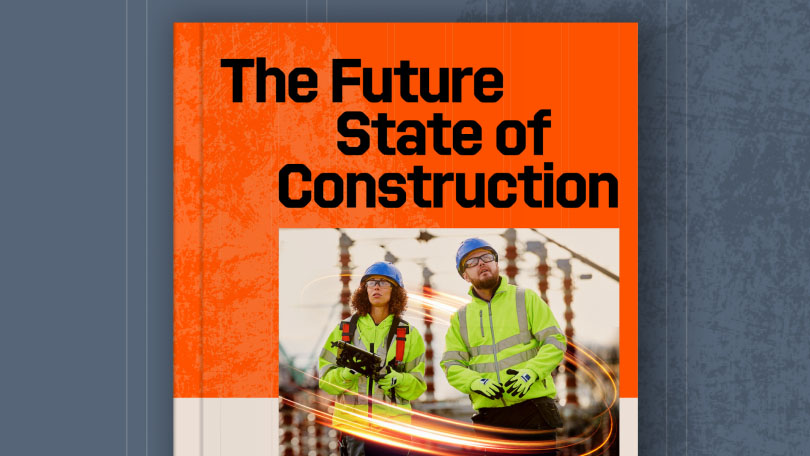— 6 min read
Snag Lists in Construction: Getting to Zero

Last Updated Jul 31, 2025

Tom Noctor
Senior Product Manager, International
16 articles
Having worked in construction for many years both on the ground as an electrician and in the design space in roles such as BIM Manager, I witnessed the highly inefficient operations of our industry and also the amount of waste generated from project delivery. I am a Digital Construction Technologies advocate @Procore Technologies, supporting and guiding the construction industry in adopting/utilising technology to deliver projects in a lean sustainable manner.
Last Updated Jul 31, 2025

When you're managing a construction project, it can feel like the tasks never end. New issues arise that need to be tackled, and then there are old tasks that sneak up on you and require a revisit. With so many moving parts, you need something to make life easier and the final construction walkthrough a breeze.
In construction project management, creating snag lists is a common practice to help you ensure that all the project specifications match the contract. Here, we dive into what a snag list is, how key stakeholders interact with snag lists, and what you can do to improve the process and achieve the goal of every contractor and owner alike: a zero snag list.
Table of contents
What is a snag list?
A snag list is an itemised checklist of outstanding tasks needing attention. Also called a punch list or deficiency list, a snag list includes any work that does not meet the specifications or items that need correction, such as incorrect installs or improper building functionality. Snag list items are usually minor fixes -- more critical issues are generally addressed with urgency, typically through a variation.
Here are a few examples of common snag list items:
- Repair broken window
- Replace chipped baseboards
- Touch up paint on ceilings
- Replace the cracked bathroom mirror
- Clear out debris in the back patio
As you can see, a snag list is comprised of small, lingering to-dos that need attention before a construction final walkthrough—or, what is sometimes referred to as a "snag out". With this in mind, every project manager's goal is to achieve a "zero snag list" before the final walk-through takes place.
Learn about the future of the built environment - Read Procore's Future State of Construction report
Learn how contractors, subcontractors, and project teams can take advantage of new opportunities to boost efficiency and profitability over the next decade. Download the report to get your roadmap to the future state of construction.

Responsibilities for Snag List Management
No one person can be solely responsible for ensuring all items are crossed or "punched" off the snag list. There are multiple key stakeholders involved in the snag list process, including owners, main contractors, subcontractors and architects.
Owner
The main responsibility of the owner or client is to be present towards the end of the project and inspect the work. As the project approaches completion, the owner should visit the job site to survey what has been done. This is a good time for the owner to inspect work, ask questions and provide any direction or final requests. These items make their way onto the snag list.
Main contractor
The main contractor has many roles in the snag list process. Because they act as a liaison between the owner, subcontractors and architect, they are central to the entire process. Their responsibilities include:
- Populating the owner's requests and comments into the snag list
- Examining what's left to be done and adding any additional items necessary to the snag list
- Allocating remaining tasks and responsibilities to subcontractors
- Determining a realistic project completion date based on the snag list, and communicating that information to all stakeholders involved
- Ensure snag list completion before the final construction walk-through
Subcontractors
Subcontractors will receive a list of tasks from the main contractor and need to address each task by the time requested. Subcontractors should also be prepared to answer any questions when it comes to these line items. For example, if a subcontractor is assigned to repair pavement cracks, the owner or main contractor may ask how the repair was done.
There may also be some cases where the subcontractor doesn't complete a task to the exact specifications on the snag list. This might be because the request wasn't viable and they used expertise and best judgement to get the job done in the most effective way possible. In these cases, the subcontractor should be prepared to articulate how and why.
Architect
During the final construction walkthrough, the architect is needed to confirm that what was designed was actually built. Before the final walkthrough, architects are also responsible for approving any changes in construction design that were necessary, and this needs to be accounted for during the final walkthrough.
Snag List Best Practices
Snag lists are fundamental to any construction project. While a simple list on a piece of paper or an Excel spreadsheet can suffice, large projects can have extensive snag list items that can get lost on paper or in Excel. There are ways to make the snag list process easier on you and for everyone involved.
1. Document as you go.
Although it can be tempting to put off creating a snag list until the very end, your team can work more efficiently if you begin creating your snag list earlier on. By implementing a snag list from the start, you also set a tone for standards and workflow for everyone involved on the job. Documenting as you go is known as a "rolling snag list" or "snag-as-you-go" method. It involves a little more work upfront with consistent check-ins on work duties and progress, but it pays off dividends in the end.
2. Assign tasks to the appropriate person.
Sometimes items get added to a snag list in a flurry. Everyone knows that it needs to get done ASAP, but they don't know who is responsible for it. No matter how big or small the task is, each item on a snag list needs to be assigned to a specific person. If it's a task that involves multiple people, make sure to assign clear roles. For example, if three subcontractors are assigned to a task, is there someone who should be taking the lead and ownership of the task? Roles and responsibilities should always be clearly spelled out, as you can never just assume that everyone is on the same page. Accountability is critical.
3. Be clear on your asks.
Once tasks are assigned to the correct party, verify their understanding of each snag list item and how to correct it. The more descriptive and thorough a snag list is, the smoother everything flows.
For instance, does the person you assigned several tasks to know when each task needs to be complete? Do they understand which tasks take priority over others?
This is where it can be helpful to use a snag list template with standardised fields -- or better yet, snag list software with customisable templates that simplify communication and reporting on task progress. The more information you extend, the more likely your project will end in success.
4. Use images to document issues.
Does everyone know which bedroom you mean by the "back bedroom?" Are the chips or stains called out in the snag list recognisable to all?
Photo documentation provides your team with receipts of the issues as they actually exist and any previous work that was done to resolve those issues. This can help prevent you from having to redo work and can also help justify why things were done the way they were.
5. Optimise the process with software.
While pen and paper can get the job done, it only ends up adding extra work and stress to your plate. Pen and paper make it hard to keep track of all the moving parts involved in a snag list, and it makes it difficult to provide real-time updates to key stakeholders involved in the project.
Even a spreadsheet falls short of the other options that exist now. Cloud-based construction snag list software keeps everyone informed and accountable at all times.
Making the Final Walkthrough a Breeze
Procore's snag list software allows you to keep a clear list of snag list items, assign responsibilities, track status and more. With a simple, intuitive interface and pre-loaded snag list templates, you can generate and update snag lists with minimal effort. Procore's mobile app enables all stakeholders to review and edit snag list on the jobsite -- to assign tasks, take photos and document issues directly in the field.
Categories:
Written by

Tom Noctor
Senior Product Manager, International | Procore Technologies
16 articles
Having worked in construction for many years both on the ground as an electrician and in the design space in roles such as BIM Manager, I witnessed the highly inefficient operations of our industry and also the amount of waste generated from project delivery. I am a Digital Construction Technologies advocate @Procore Technologies, supporting and guiding the construction industry in adopting/utilising technology to deliver projects in a lean sustainable manner.
View profileExplore more helpful resources

Construction Management Contracts: A Complete UK Guide
Managing construction contracts can lead to an extensive physical paper trail. Sharing contracts, getting signatures and managing timelines is difficult when teams and clients are scattered across job sites and...

Key Differences Between Contractors & Subcontractors
In UK commercial construction, main (or principal) contractors engage directly with project owners to deliver complete construction programmes, while subcontractors perform specific scopes of work under the main contractor’s management....

The Role of RFPs in UK Construction Projects
Requests for Proposals (RFPs) are a core document for construction procurement in the United Kingdom. Effective RFPs align expectations, establish clear evaluation criteria, and create accountability between clients and contractors....

Financial Management in Construction Projects
Effective financial management can make or break construction projects. Teams that master budgeting, cash flow and cost control are better positioned to deliver projects on time, within budget and with...
